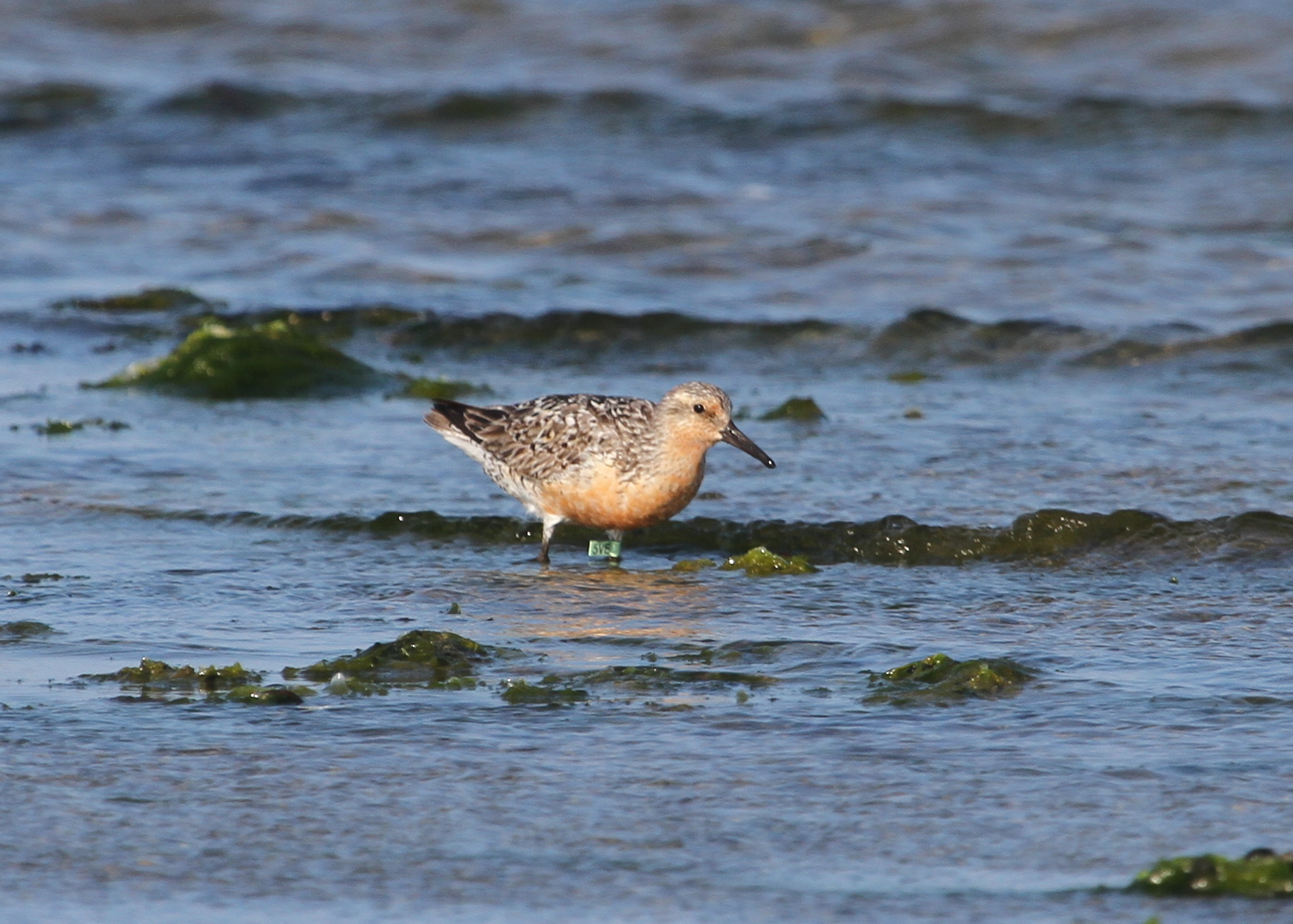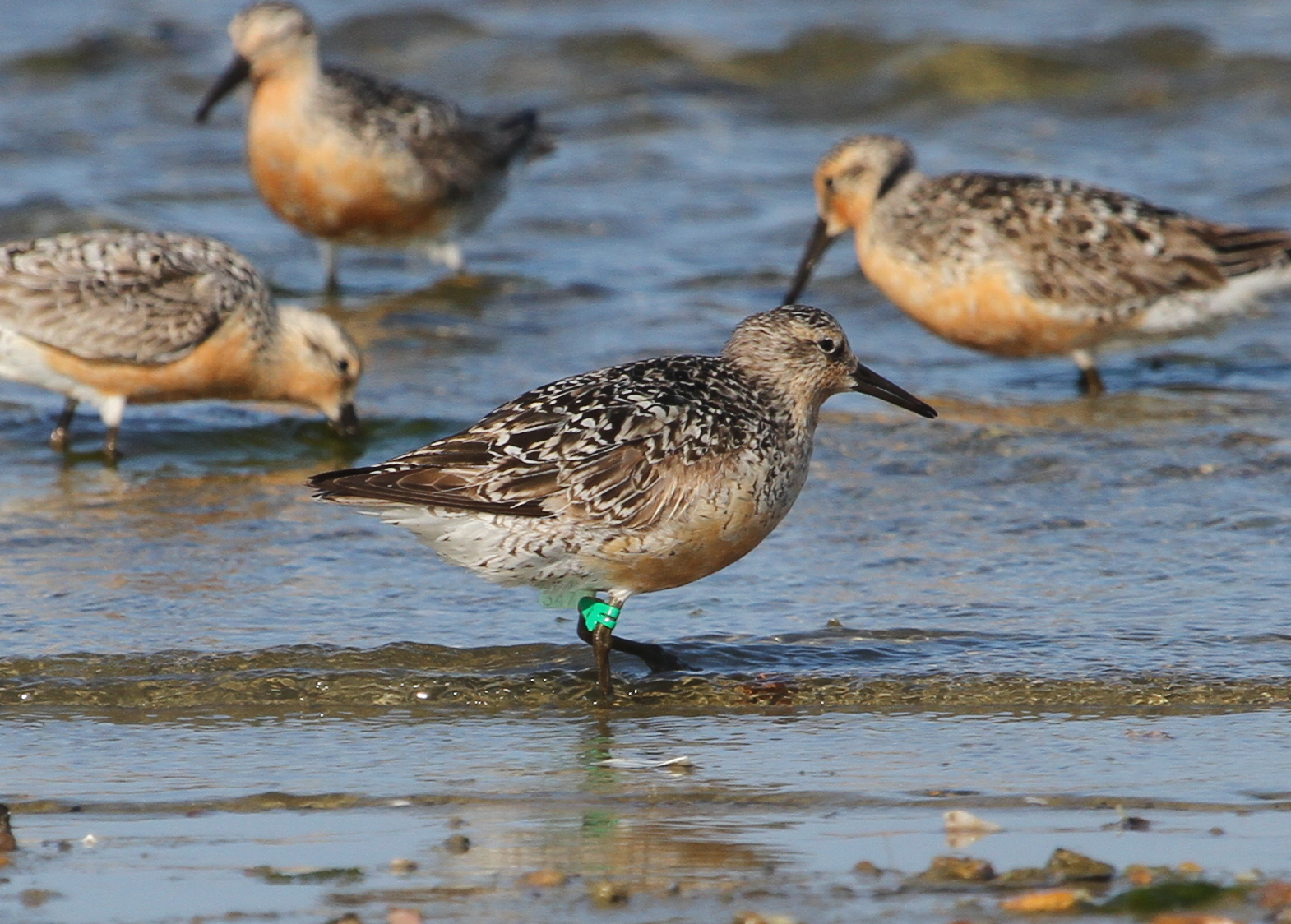Do you find satisfaction in a challenging word search or crossword puzzle? Are you one to become fully absorbed in detail oriented tasks and lose track of time? And do you like birds?
If you answered yes to any of those questions, then resighting banded Red Knots could be for you! It is a dramatic, challenging, yet rewarding experience. It is a pastime I recently took up and another check on any birder’s ideal skill set. Not convinced it’s worth trying? Allow me to paint you a picture…
I arrive at Tern Island across from the Chatham Fish Pier, armed with a scope, binoculars, and a notebook. I come two hours after high tide, knowing the tide will quickly fall from there. At this moment the birds are still huddled together on the northeast side of the island, roosting, but not for long. By the time I make my way across the marsh, the birds have begun to move towards the northern flats. The water steadily falls away to expose the wide expanse of mussel beds beneath. The collection of shorebirds includes Red Knots, Short-billed Dowitchers, Semipalmated Sandpipers, Semipalmated Plovers, Ruddy Turnstones, American Oystercatchers, and Willets, to name a few.

Shots through the scope. On the left, a mixed flock—Short-billed Dowitchers, with feeding Semipalmated Sandpipers, American Oystercatchers and a few Red Knots. On the right, mainly Red Knots. (Photos courtesy of Meghan Beatty)
I slowly creep towards the birds with my scope at the ready. Forty feet is a nice distance. Close enough to be able to read the bands, but far enough away not to disturb the shorebirds as they feed. I put my eye to the scope and scan the array of birds gorging themselves on young mussels. It is not long before I find my first target, a Red Knot, recently arrived from nesting in the Arctic, with a dark green flag attached to its leg. We refer to them as “bands”, but the Red Knots have flags with a combination of letters and numbers (usually three) that are unique to that individual. After some fine-tuning of the scope, I bring the code to focus to discover the letters NLU. Before I can forget it, I quickly record the code and color in my notebook. I note, based on the combination of letters, that it is most likely an individual just caught and banded this month by US Fish and Wildlife biologists at nearby South Beach or North Beach Island.

A Red Knot banded with a light green flag with the code 5VE, banded in Delaware in 2015 (Photo courtesy of Mark Faherty)
Time slips away as I continue to follow the birds and record the various codes and colors. Some bands are easily read, others infuriatingly just out of reach as the bird wades into deeper water or refuses to turn into the light. I triumphantly record a code I deciphered mere seconds before a gull flies over and flushes the crowd, shuffling the shorebirds. Whoever said that birding is boring? A couple hours later I find myself with about 40 banded birds, including a few Short-billed Dowitchers, newly scribed in my notebook. Most have dark or light green flags, meaning they were caught and banded in the United States, but a few are orange, from Argentina, or red, from Chile.

Red Knot with a geolocator that records approximate coordinates calculated from day length data. Birds have to be caught again to download the data (Photo by Mark Faherty).
Fast forward to me back in the office where I am entering each carefully collected code on bandedbirds.org as well as in our own database for Wellfleet Bay Wildlife Sanctuary. I take delight in looking up where the Red Knots have been previously resighted and knowing my data is contributing to research that will help shed light on the full life history of these birds. The more we know, the better we can protect the environment they require. I vow to go out again soon because in only a matter of weeks they’ll be gone, journeying south to enjoy the winter in a milder climate in the southeastern US or South America.

Meghan resighting Red Knots at Tern Island in Chatham

